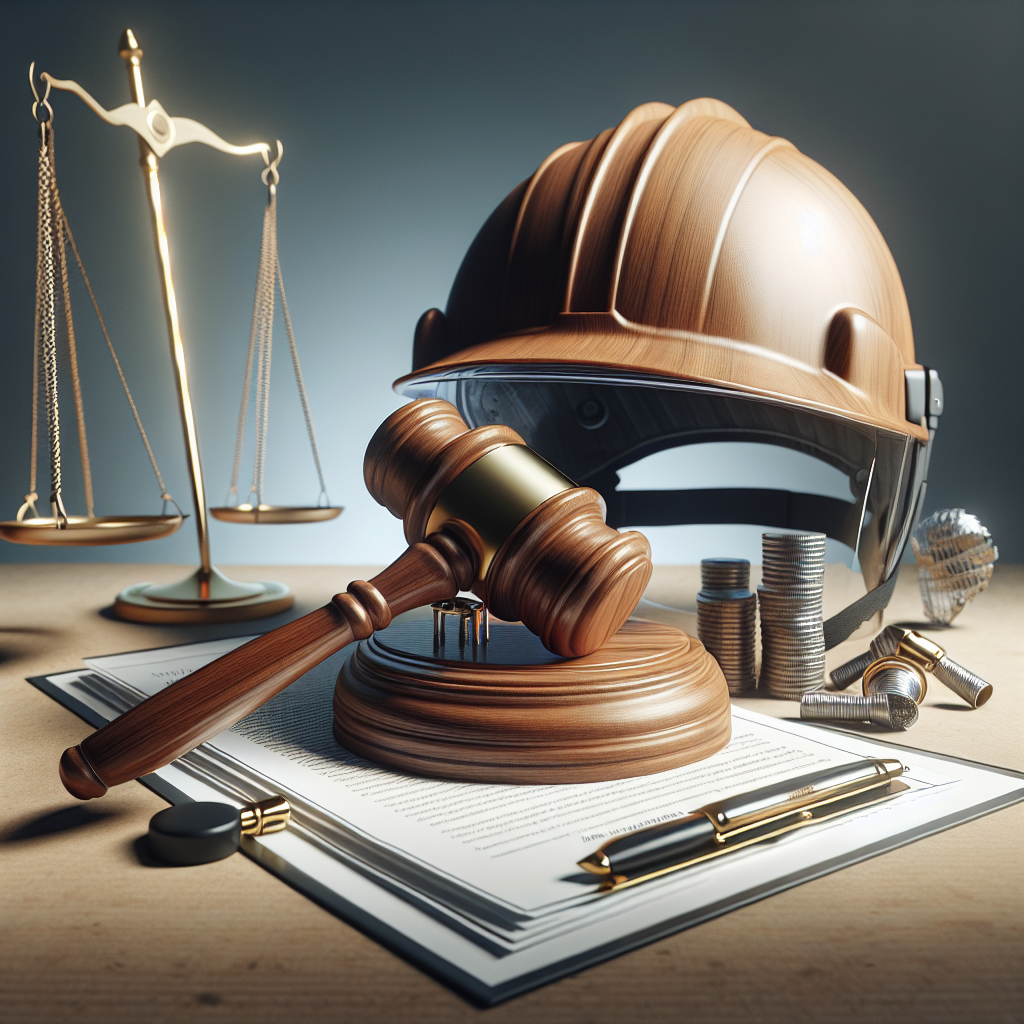Defining Product Liability Claim
A product liability claim pertains to the legal responsibility that a manufacturer, distributor or seller incurs in case their product causes injury or harm to the consumer. This liability is based on the premise that these entities have a duty of care towards the end users of their products. If a product fails to meet the standard of safety reasonably expected by consumers and leads to personal injury or property damage, a product liability claim can be made against the entity responsible.
The Basis of a Product Liability Claim
Product liability claims fall under the purview of tort law. The three primary bases for filing such claims are negligence, strict liability, and breach of warranty. Negligence refers to a situation where the responsible entity failed to exhibit due care in the manufacturing or distribution process. Strict liability implies that the liable party is held responsible irrespective of whether they demonstrated due diligence or not. Breach of warranty occurs when a promise regarding a product’s performance or quality is violated.
Types of Product Defects
Typically, there are three types of product defects that can lead to a product liability claim; design defects, manufacturing defects, and marketing defects. Design defects refer to inherent flaws in a product’s design that make it harmful or unsafe. Manufacturing defects are the irregularities that occur during the manufacturing or assembly process. Marketing defects include inadequate instructions, failure to provide ample warning about potential risks, or misleading advertising. It’s vital for consumers to understand what constitutes each type of defect as this knowledge forms the basis of pursuing a product liability claim.
Legal Framework for Holding Companies Accountable
Understanding Product Liability Laws
Product liability laws provide a framework for holding manufacturers, distributors, and retailers accountable for harm caused by defective or dangerous products. These laws are built on the premise that companies have a duty to protect consumers and should be held liable for failing to uphold this responsibility.
In general, there are three types of product liability claims: design defects, manufacturing defects, and a lack of adequate warnings or instructions. Design defect claims arise when a product’s design is inherently harmful, regardless of how carefully it was manufactured. Manufacturing defects occur when a product deviates from its intended design during the manufacturing process, rendering it unsafe. Finally, a company may be held liable if they do not provide sufficient warnings or instructions, leading to misuse of the product and consequent injury.
Principles of Strict Liability
Strict liability plays a crucial role in product liability. According to this principle, a company can be held liable for damage caused by its products, regardless of whether negligence or intent to harm can be proven. This concept ensures that the burden of proof does not fall entirely on the consumer, who may find it challenging to demonstrate the manufacturer’s negligence.
Strict liability applies not only to manufacturers but also to wholesalers and retailers, making it possible for any party involved in bringing the product to market to be held accountable. However, the plaintiff must demonstrate that the product was defective, the defect caused the injury, and the product was being used as intended.
Role of Regulatory Agencies
Regulatory agencies play a pivotal role in overseeing corporate accountability. In the United States, for instance, agencies like the Consumer Product Safety Commission (CPSC) and the Food and Drug Administration (FDA) enforce regulations designed to protect consumers from hazardous products.
These agencies have the power to recall unsafe products, impose fines, and even press criminal charges against violators. However, their ability to hold companies accountable does not preclude individuals from seeking personal compensation through lawsuits.
It’s crucial to understand that different jurisdictions may have different rules and regulations regarding product liability, and the legal framework outlined here may not apply universally. Always consult with a legal professional to understand your rights and the laws applicable in your specific circumstance.
Types of Damages in Product Liability Claims
Defining the Three Primary Categories of Damages
In product liability claims, the damages sought typically fall into three main categories: compensatory, punitive, and nominal damages.
Compensatory damages aim to make the plaintiff “whole” again after an injury. This type of damage covers both economic and non-economic losses. Economic losses may include medical expenses, lost wages, and rehabilitation costs. Non-economic losses cover pain and suffering, loss of enjoyment of life, and emotional distress.
Punitive and Nominal Damages Explained
Punitive damages are not designed to compensate the injured party, but instead to punish the defendant for particularly egregious behavior and deter others from committing similar acts in the future. They are usually awarded in cases where the defendant’s actions were intentional or grossly negligent.
On the other hand, nominal damages are awarded when a plaintiff demonstrates that the defendant acted wrongfully, but cannot prove a substantial loss or injury. These are typically small amounts meant to acknowledge the defendant’s wrongdoing.
Special and General Damages
The types of compensatory damages can be divided further into special damages and general damages. Special damages, also known as consequential damages, compensate for quantifiable monetary losses suffered by the plaintiff like medical expenses or lost earnings.
General damages, on the other hand, compensate the victim for non-monetary damages that are more difficult to quantify. These may include physical pain and suffering, emotional distress, loss of consortium (companionship), or reduction in quality of life.
Each case is unique, so the different types of damages available will depend on the specifics of the case, including the nature of the injury, the conduct of the defendant, and applicable state laws.
How to File a Product Liability Claim
Understanding Product Liability Claims
Product liability is a legal principle that holds manufacturers, suppliers, distributors, and retailers accountable for any damage or injuries their products cause. These claims typically fall into three major categories: manufacturing defects, design defects, and failure to provide adequate warnings or instructions about the product’s proper use.
If you have been injured or suffered other damages due to a faulty product, you may have a viable product liability claim. Here are the steps you need to follow:
Identify Parties Involved
The first crucial step in filing a product liability claim is identifying all potential defendants. This could include the manufacturer of the product, the wholesaler, and the retail store where the product was sold. Identifying the responsible parties can be complex, particularly if the product was part of a larger system or involved various components produced by different manufacturers.
Document the Product Defect
Once you’ve identified all potential defendants, the next step is to document the exact nature of the product defect. This can involve taking photographs, keeping a copy of the product and its packaging, retaining any manuals or instructions, and recording details about when and how the product was used when the injury occurred. If the product has been discarded or destroyed, you may still pursue a claim, but proving the existence of the defect could be more difficult.
Seek Medical Attention and Preserve Records
If you were injured by the product, it is imperative to seek immediate medical attention. Preserve all medical records and invoices as these will be key evidence to prove your injuries and document your financial losses.
Hire an Experienced Product Liability Attorney
Product liability law is complex and varies between jurisdictions. An experienced attorney can guide you through the claim process, negotiate on your behalf, and help you navigate the legal requirements and defenses that might arise.
File your Claim
With evidence in hand and legal representation secured, you can now file a product liability claim. The timeframe for doing this varies by jurisdiction (typically between 1-4 years from the date of injury), so it’s essential to act as quickly as possible.
Remember, every product liability case is unique and requires a tailored approach based on the specific facts and circumstances. These steps provide a general guide, but obtaining professional legal advice is paramount.
Case Studies of Successful Product Liability Claims
Victory against a Defective Automobile Manufacturer
One of the most renowned cases in product liability claims centers around a prominent automobile manufacturer. A family was driving their mini-van home when their vehicle’s rear axle broke, causing the car to spin out of control and crash. Tragically, the accident resulted in severe injuries for some family members, while others lost their lives. The distraught family sought justice and filed a product liability lawsuit against the automobile manufacturer. After an exhaustive litigation process, it was found that the axle had a manufacturing defect, leading to premature failure. As a result, the court held the company liable for the accident and awarded the family substantial compensation for their loss and suffering. This case shows that even large, reputable companies can be held responsible if their products cause harm due to negligence.
Big Win against a Pharmaceutical Giant
In another significant case, a pharmaceutical giant found itself at the center of a product liability lawsuit. A patient who had been consuming one of the company’s drugs for years developed serious health complications that were directly linked to prolonged usage of the medication. Investigations indicated that the pharmaceutical company was aware of potential side effects, but failed to provide sufficient warnings to consumers. The jury ruled in favor of the plaintiff, holding the company accountable for the harm caused by its negligence in providing appropriate warnings on their product. This lawsuit not only ended in substantial monetary relief for the victim, but also forced the pharmaceutical company to revise their guidelines and improve transparency regarding potential risks of their drugs.
Successful Claim against a Toy Manufacturer
A classic example of a successful product liability claim is the case of a popular toy manufacturer. A child was injured while playing with a toy which contained small detachable parts. The child accidentally swallowed one of these parts, requiring emergency medical intervention to save their life. The parents sued the toy company, claiming that the toy was inherently dangerous and did not contain adequate warning about its small parts. During the trial, it was proven that the manufacturer failed to meet the safety standards for children’s products. The court ruled in favor of the plaintiff, thereby compelling the toy company to pay for the damages. Furthermore, the lawsuit triggered a recall of the hazardous toy from the market, protecting other children from similar incidents.



